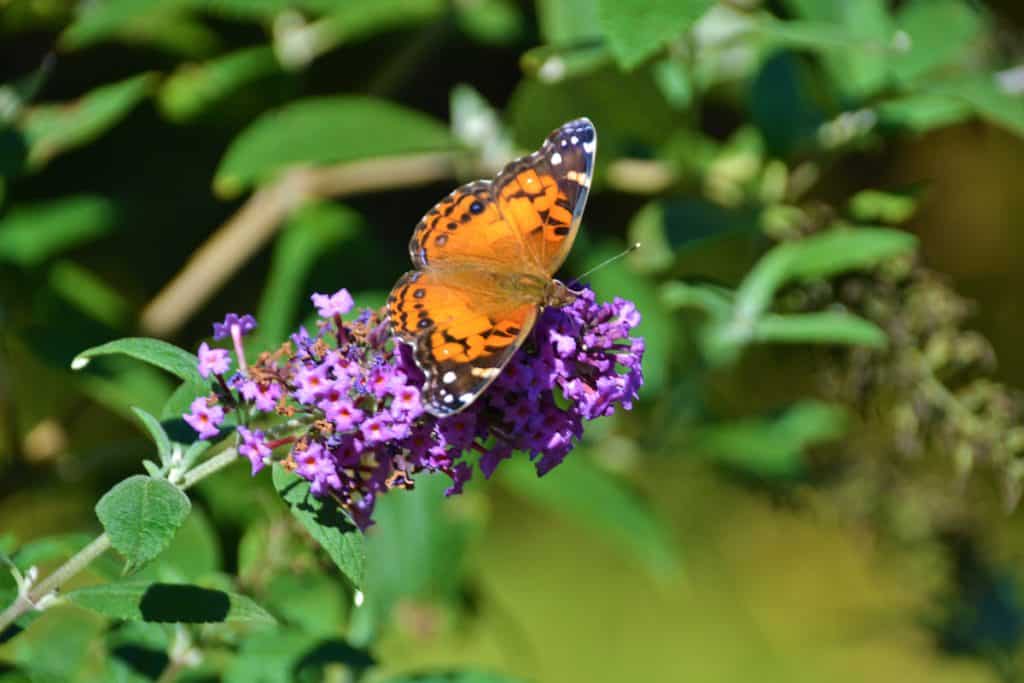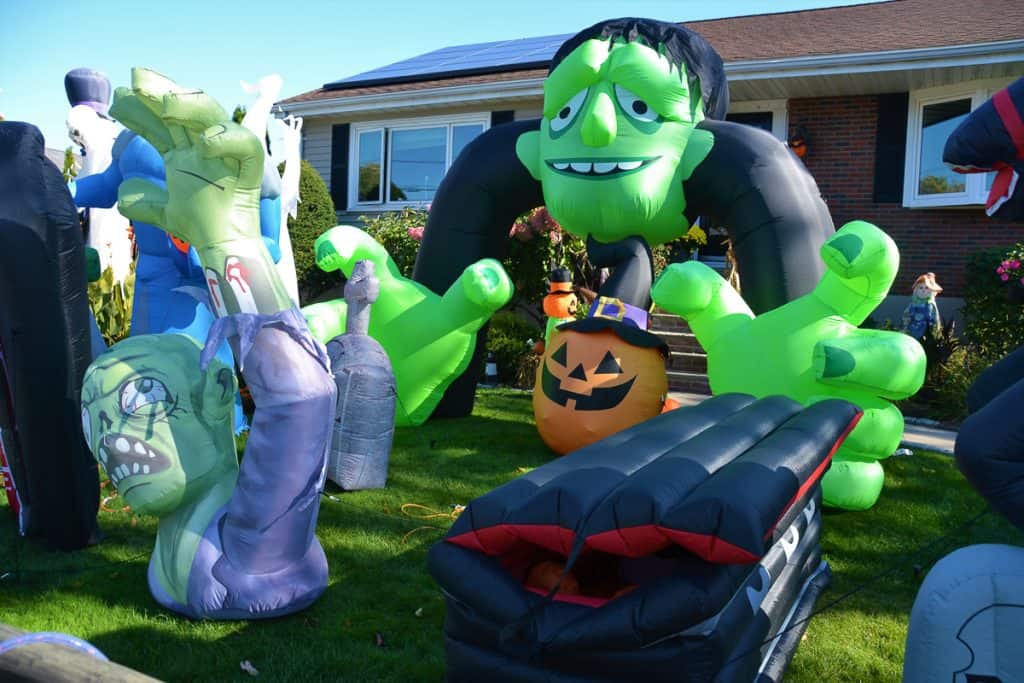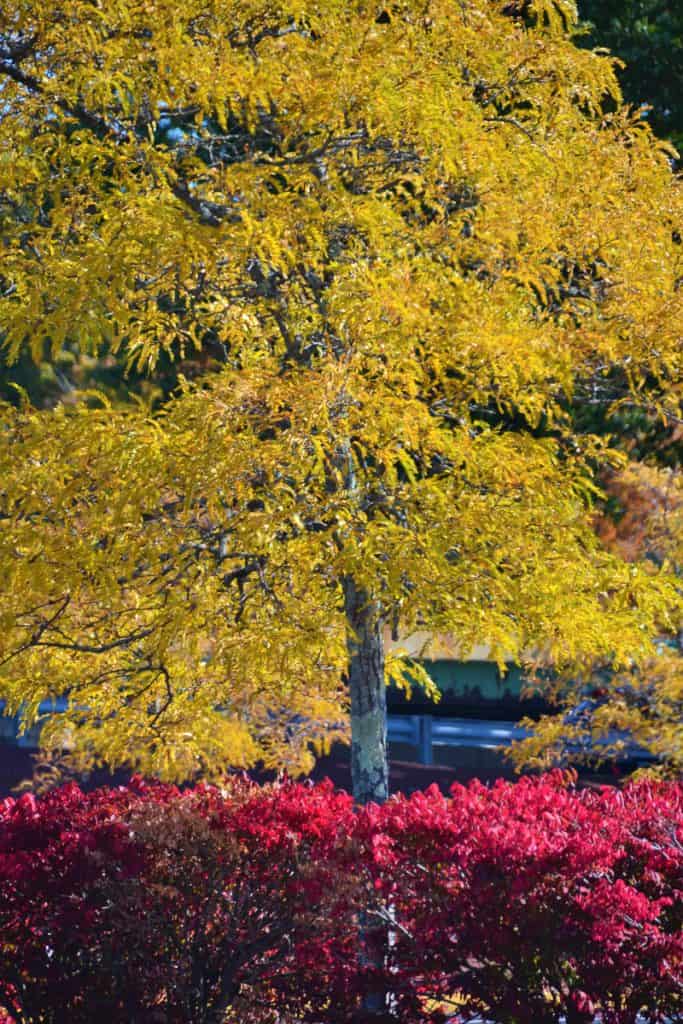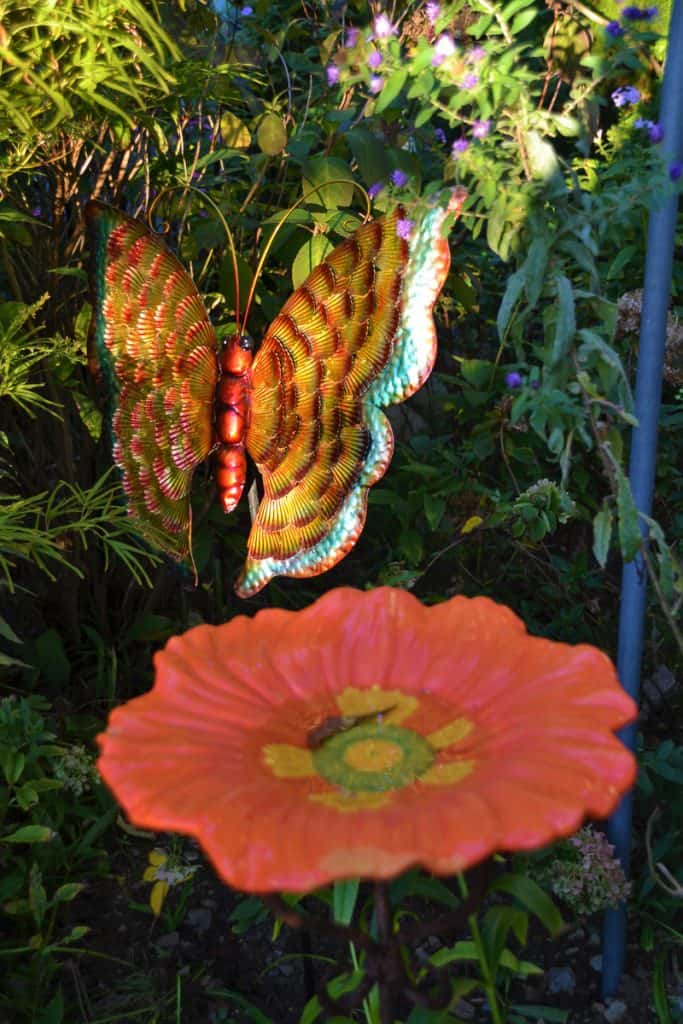Here’s what’s blooming in town this week to make your walks more enjoyable
Despite the fact that the growing season is drawing towards its close, many gardens look better now than they did at the height of summer, since we are getting somewhat more reliable rains. Along with the dramatic foliage colors, we have summer flowers still in bloom and fall flowers chiming in to join them.
One garden in Saugus that never seems to stop blooming is the one cared for by Ann Condon and her daughter Amariah. Several kinds of aster are the stars of the garden right now, and over 30 different varieties of Japanese maple are beginning to show their fall color. When I stopped to peek over the fence, I could glimpse many unusual and interesting plants, and a happy cricket chirped its enjoyment of the autumn afternoon.
New England aster (Symphiotrichum novae-angliae) is only one of several aster species blooming now, but it is one of the showiest. Second only to chrysanthemums for its reputation as a fall flower, it is a true New Englander, as its scientific name, “nova-angliae,” proclaims. This native perennial has become popular in European gardens, where it is often called Michaelmas daisy because it may begin blooming on September 29, which is usually known as the Feast of St. Michael, Gabriel and Raphael, or Michaelmas. Asters in general are fall bloomers, with heath aster (Symphiotrichum ericoides) flowering well into November. Many bees and butterflies hover around the flowers, and aster seeds are appreciated by birds. Like daisies and sunflowers, asters are members of the composite family (Asteraceae or Compositae). New England aster’s ray florets are often purple or violet, but can also be white or many shades of pink.
Honeylocust (Gleditsia triacanthos) and green ash (Fraxinus pensylvanica) are two trees widely planted in Saugus that are close to peak this week with bright yellow fall color. Honey locust has tiny leaflets, usually less than an inch long, which often fall individually from the leaf stalk, so there is not much to rake up. This made them the most popular street tree to plant in the 1970’s and 80’s over most of the Northeast. They can be enjoyed right now in many parking lots on Route 1, around the rotary in Saugus Center and elsewhere on Central Street, in the parking lot of Saugus Iron Works and the Saugus Senior Center, just to mention a few places. Another widely planted tree with vivid yellow at this time is green ash (Fraxinus pennsylvanica), a North American native with somewhat larger, more pointed leaflets. There is a beautiful row of them on the Lynn Fells Parkway near Target, and on Cider Mill Road in Lynnhurst. Not far out of town, golden branches of green ash line both sides of the Lynn Fells Parkway near Melrose High School.
American lady (Vanessa virginiensis), a North American butterfly, is not easy to distinguish from its close relative painted lady (Vanessa cardui), which is found almost worldwide in temperate areas. Both are primarily orange with black markings, as are viceroys and monarchs, but the lady butterflies are smaller, and the markings may better be described as spots rather than stripes. American lady has markings on its forewings (the pair of wings closest to its head and antennae) that some describe as a jack-o-lantern face, with a jagged “smile” of black on a primarily orange background. Others describe this as a cobweb pattern. The butterfly must be viewed from above with its wings spread to see this design. However you see it, the patterns seem to have an October theme. When its wings are folded, the butterfly is mostly brownish and well camouflaged. Both species can be found in our area spring through fall. The American lady I saw on Sunday was sipping nectar from a butterfly bush (Buddleia davidii) at Breakheart in the meadow near the exercise area.
Something spooky is going on in many neighborhoods this month, and Vine Street certainly has its share of scary scenes. Sunday afternoon I saw a young man, Joey Mastrocola, working on one of the many inflated Halloween figures that now grace the family’s formerly tranquil front lawn. Joey, who is now 13 and attends Saugus Middle School, was only three when he saw a Halloween blow-up in a store, and the family’s collection started from there. A huge black cat extends its claws, a headless horseman gallops across tombstones, and an assortment of scarecrows grin at passers-by. Halloween is the family’s favorite holiday. Tony and Steph Mastrocola and their family have enjoyed decorating their garden for 11 years now, and people in the neighborhood look forward to seeing the display as Halloween approaches.
Editor’s Note: Laura Eisener is a landscape design consultant who helps homeowners with landscape design, plant selection and placement of trees and shrubs, as well as perennials. She is a member of the Saugus Garden Club and offered to write a series of articles about “what’s blooming in town” shortly after the outbreak of the COVID-19 pandemic. She was inspired after seeing so many people taking up walking.







